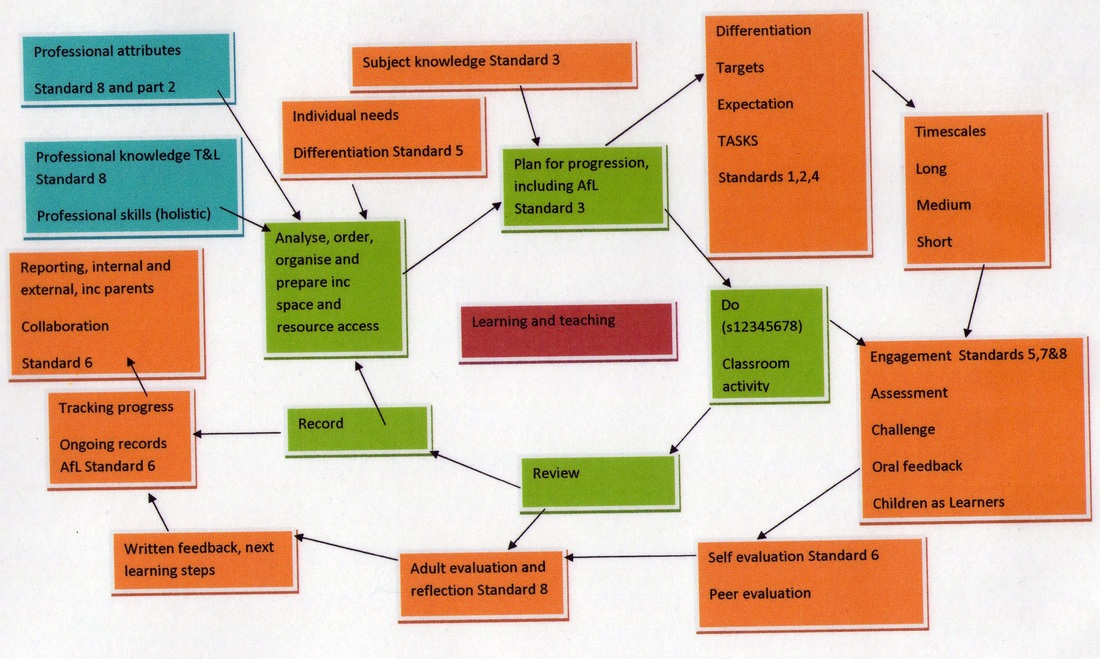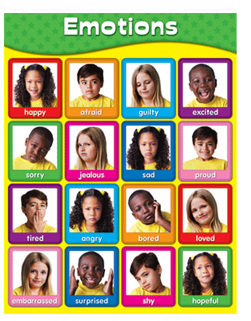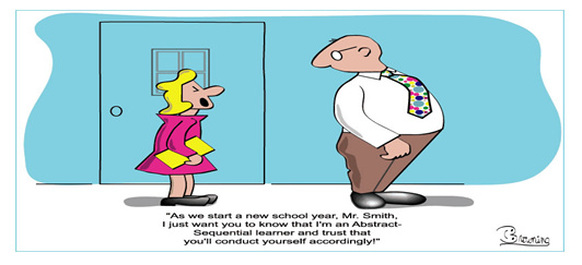Personalisation is the fine tuning of expectation to ensure that every learner makes progress within lessons and across time. Where learners develop as partners in their learning, they can begin to take greater responsibility for their learning progress. The process needs to be modelled, tracked and modified to need. Personalisation is very visible in schools where there is a significant proportion of individual need. Even within these, though, there can be a proportion of children for whom expectation and follow up may be less clear, as they are described as a group, top, middle etc. It is the latter group where personalisation is achievable, but through a clear thought process.
Assessment visits to a range of schools during the 2012-13 academic year appeared to develop a dynamic determined by the schools being assessed, looking to show how they were ensuring that every child received a tailored approach to their educational needs. During the year, I wrote a number of posts based on reflections from visits. I have referred to some of these alongside the sub-headings, but there are others on the IQM website, teaching and learning tab.
This post is prompted particularly by visits to Streatham Wells Primary, Vauxhall Primary, Orchard Primary, Hackney and Phoenix Primary, Wandsworth, four London schools working in extremely challenging environments and with a very broad range of needs to be addressed.
A comment from one head that the school had no alternative but to personalise teaching and learning to address individual issues, because there were so many, suggested that within this statement lies the essence of inclusive/ personalised policy. The greater the need, the greater the adaptation needed and thereby the greater the capability of the school system to accommodate to the next set of needs. High quality Inclusion and personalisation will therefore be a product of identified need and the school capacity to accommodate.
In other posts, I have discussed the teaching standards as they currently exist and it is clear to me from that exercise that there is an implicit series of statements which confirm that the need to identify and address with speed the individual needs of pupils is a core element of standards 6 and 5, assessment of needs and adaptation to need. It is also clear that it is the needs of all learners that are being inspected by Ofsted, so personalisation is of current interest.
Personalisation is a product of a thought process, articulated in other posts as analyse-plan-do-review-record, drilling down ever deeper into individual needs.
Described as a diagram, the teaching and learning process makes the standards more useful as a descriptor. Much of this post will be based around the green boxes as headings, with the external descriptors adding the substance.
Personalisation is a product of knowing children really well from the outset. The better the learners are known the finer the tuning of anticipation and expectation, so the learning journey is more profitable for all concerned. False assumptions can hamper progress. The teacher role is to identify and quickly remediate misconceptions.
There will be records of prior learning, either as an internal tracking document or as transfer data. This is an essential start point, at the very least because it gives the range of need and the clustering of needs, where groups have similar, but not identical, personal capabilities. These records should not be ignored or downgraded. They represent a professional decision and are the start point for the next phase of learning.
Knowing your children well is an essential start point for any teacher. For some, the needs identified will be great, requiring significant adaptation of plans. Others will be capable of following the prescribed curriculum with guidance and less support.
Preparation at this level leads to a teacher mind-set which determines where the learning journey will progress and at what speed. It is an essential precursor to detailed planning. The best observed practice in IQM schools is based on very clear identification of need and the tracking of progress within learning opportunities.
Preparation
Personalisation is not something that just happens. It is a product of having been systematic in thought to afford time within a lesson to engage with and advise next learning routes to a learner, with time built in to begin to address any issues identified.
Before any teaching takes place, the organisation of the available space to accommodate the teaching envisaged is a priority. The arrangement of the tables and chairs, the organisation of resources and the movement routes need to be planned to avoid bumping and boring for spaces and resources. Ease of movement and resource retrieval/return should determine decisions.
The debate about displays in a classroom will always be subject to personal preference. Mine would be to welcome learners into a space where it is clear that interesting things are likely to happen and where work that they produce will be valued. The sophistication of the display needs to be matched to the class need.
Exercise books/paper, chosen with care can add to learning and be capable of personalisation. Plain paper with writing lines beneath can allow for different writing, gross or fine motor skills. Writing drafts of alternate lines can provide space for intervention, redrafting, or just playing with ideas. Another post looks at a two page approach to the writing process.
The school behaviour policy needs to be available to be shared to ensure the embedding of common approaches.
The curriculum will largely have been determined by the school with reference to national and local expectations. Ordering and organising the dynamics of the learning over a longer timescale, in overview, will offer the teacher a chance to concentrate on the immediate, in the knowledge that other areas are timetabled. An annual plan supports this thinking.
Within the overview planning, themes will be timetabled to cover a series of weeks comprising a specific number of lessons within each of which a specific body of knowledge will be imparted. The whole is a product of the parts.
The time in between is equally important. Homework, addressed as rehearsal time can become components of learning, not just an activity to fill time. The notion of the flipped classroom can also be useful, with time at home spent reading notes, looking and listening to video material. Home can also be a place for note making and first drafts, leaving lesson time for discussion, redrafting, reflection.
Differentiation
Whereas this stage should be an active constituent of planning, embedding, as it does matching challenging work to children’s different needs, it can be diverted by simplistic application. Differentiation embeds expectation, with prior capability being challenged and specific next steps to be considered. Expectation develops a teacher mind-set against which judgements are made within a lesson, requiring intervention, feedback, teaching, reframing challenges among a range of options.
It’s likely that in the early stages of a term, differentiation by outcome will be used, simply as a means to validate earlier data. Once this is done, other forms of differentiation should be deployed, based on outcomes.
Differentiation by support can also be a self-limiting approach, as it can develop dependency, from the support adult and the learner(s). The ability to step back from the learner and to allow time for unaided work is an essential part of decision making, as it is what a child can do for themselves which needs to be assessed.
Differentiation by task is a challenge for teachers, but can be achieved within themes, with discrete tasks being set to challenge different abilities. This was the bread and butter of the integrated day classroom.
Differentiation by expectation, supported by an interplay of task specific success criteria and personalised targets, can be an effective methodology. Teachers tie themselves in knots seeking to demonstrate differentiation, challenge and then progress within a lesson. Yet it is within this aspect that the refining of teaching and learning, seeking to address individual needs is embedded. Differential expectation, if seen as a hypothesis, is then subject to reflective observation within a lesson and adaptations where there is a discrepancy between expectation and evidence.
While the teacher is talking, or sharing a video, children can be practicing note making, supporting their engagement.
Where this is embedded in practice, the notes can support drafting of ideas and keep the process together, where a wipe on wipe off board notes can be lost.
The notion of different drafts can be very powerful, especially if the process is embedded within practice, perhaps as home activity, with lesson time devoted to editing
and improvement, rather than being spent silently writing. Learners should recognise that any piece of writing can be improved, even if deemed a “final draft”.
Task specific success criteria. Sometimes articu
lated as steps to success, these are likely to be a
list of instructions in order to achieve the task. They rarely set challenges at an individual level. There needs to an articulation of expectation for different groups, within which the expectation can be personalised to individuals, from the outset. The term “at least” is a useful non-limiting phrase to articulate expectation.
Personal targets. In a Junior classroom, this can range from writing coherent sentences with capital letter and full stop (L1) to paragraphing and complex sentences with engaging and exciting vocabulary (L4) and the many steps in between, as recorded through APP (Assessing Pupil Progress) style records.
If these expectations are placed in front of both child and teacher, as fold out sheets, they can become a part of the in-lesson discussion, as well as being available for self-evaluation prior to handing work to be marked. Highlighting both the target being assessed and the evidence within the activity can support more detailed feedback comments.
Teacher as observer. It’s essential for the teacher to keep a close eye on the developing activity, checking out the behaviours which suggest an aspect of off-task activity, intervening quickly, making changes if necessary to the task demand, either by increasing or decreasing the challenge, or offering specific guidance to enable the learner to progress. The detail of this is an integral part of teaching standards 6 and 5, where Assessment for Learning decisions lead to classroom adaptation to evidenced need.
Review.
At certain points in an activity, there is a need to review progress within the learning process. While this can be activity based, how far the learners have got, it’s more important to focus on the learning and sharing good examples to provide a continuing stimulus from within the learner group. It is a form of peer encouragement; they can, so you might.
Oral feedback is an integral part of classroom practice. If this is clearly focused on the task success criteria at one level and the learner personal targets at another, the discussion will be focused on learning, with a partnership model developing.
Self-evaluation needs to be against some kind of reference frame. In the absence of any other frame, the use of the level descriptors as progress descriptors would provide a starting point. If written as capabilities, these statements can be evidenced within the finished product, guiding marking, validating a learner insight, or adjusting the frame of reference with deeper insight into the expectation.
The use of visualisers or other images from within the activity can promote a range of discussions. Work can be shared and discussed/improved. Digital images can become a storyboard for retelling and reflection on the process, supporting less confident learners. Make all learning as visible as possible.
Marking is feedback as well as quality control. Learners are entitled to know something as a qualitative response. This is often expressed as WWW-what worked well, with a positive set of comments. Improvement, expressed as EBI-even better if, can be specific to task and personal expectations.
Time needs to be given in subsequent lessons to reflect on the feedback and to address any issues arising, if marking is to serve a positive purpose.
Record
There will be a need to track progress over time. If personal targets are stuck onto the edge of exercise books, are subject to regular use within lessons and for marking, in themselves they become on-going records. If the two page approach to exercise books is used, the teacher summary/marking will also be evidence; placed as the header of the next piece of work, it can be the start point for the next challenge. This ensures that personalised marking supports learning.
Teachers need to develop methodologies which suit their classroom practice.
Display/celebration.
Quality displays of children’s work can provide significant opportunities for learning improvement. Display broadens the audience for any finished work. Where peers are offered the opportunity to comment on the finished product, this peer critique can provide food for thought and further discussion. Questions, teacher comments, post-it comments, can turn a display into a working wall, supporting general class improvement.
Where walls of words are displayed, these can become counter-productive as it can be difficult to find specific words. It can also waste wall space which can be better used to promote learning. Personalised dictionaries, at the desk, are more user-friendly.
Summary
Personalisation is an aspiration and a process. Some teachers intuitively engage at this level, while others have to consider the steps, taking action at appropriate times. Different teachers have differing strengths, so some will be better at analysis, planning, classroom activity, feedback and review or record keeping. It is essential that each component is explored to become an area of strength, so that the holistic aspects become stronger.



 RSS Feed
RSS Feed
